You all know the expression, “If you want something done right, do it yourself.” In Cambodia, we have a similar saying, “If you want something done, do it yourself (‘cause no one else is going to help you!)” Over the years I have built homes, orphanages, roads, sidewalks and even attempting to build a bridge (but that’s a long story). The Khmer Rouge, when they fully conquered Cambodia in 1975, called their first year “year zero”, as they were building a “new society”. After the Khmer Rouge regime nothing was left; No roads, no schools, no hospitals, no electricity, no water or plumbing and 3 million lives were lost. So after the Khmer Rouge, it was really “zero”.
Since the peace of Cambodia in 1998, when fighting ceased between Cambodia’s political factions, the country has been rebuilding. Every building our ministry uses, we built ourselves. Our centers were mere minefields before we converted them to ministry centers for children. So, every improvement on the property we do ourselves as well.
Cambodia has no Home Depot, we have no trade unions or commercial contractors that we can hire. Mostly, if you want something done, you just do it yourself. So, we wanted a road. Before I came to Cambodia, I didn’t know anything about road building. Now, I build roads. This is how you build a road:
- First, lay down stones flat and pack them down with a weight (anything heavy will do). Spread sand over it to fill the gaps and water it extensively.
- Second, lay organic re-bar (we want to be eco-friendly in the 21st century). Bamboo cut into strips. Bamboo will not rot in the cement and it is a very, very strong grass. Yes, bamboo is a grass. Pure organic! (And did I mention it’s dirt cheap!) With no re-bar, your cement will crack because there is nothing to hold it together. Cement is great at compression strength, but horrible at tensile strength.
- Third, use volunteer labor to tie all the bamboo together (this will be the only non-organic matter in the finished road. (Road components: foundation rocks, sand, gravel, cement powder, water, bamboo and 2 pounds of wire).
- Fourth, prepare forms. I borrowed these from a friend. You can use just about anything, it just has to be braced so that the wall will not collapse with the weight of the freshly poured concrete.
- Fifth, get two truck loads (12 cubic meters) of concrete poured.
- Sixth, gather all your friends to frantically smooth out the freshly poured concrete road.
- Seventh, patch any uneven spots (or where the stupid dog ran across the wet concrete).
- Eighth, apply water as the concrete dries to increase the strength. Keep all heavy objects off the road for 28 days until the concrete has fully cured.
- Ninth, celebrate! You just made a road! (Eat the stupid dog!)
Some may try to say that my organic road is sub-standard. It actually can support 130 pounds per square inch. That means that 25 ton cement truck could drive on it! Not bad huh! (Ok, there is a lot of theory involved here, but the Mythbusters haven’t tested it yet.)
Now, what everyone wants to know: How much did it cost:
- Forms: 0.00 (Free, I borrowed them)
- Bamboo: 10.00
- Foundation Rocks: 50.00
- Sand: 16.00
- Labor: 100.00 (2 workers at $5.00 per day, other labor volunteer)
- 2 pounds of wire: 3.00
- Cement: 720.00 ($60 per cubic meter)
- Total Cost: $899.00
How big was my road?: 96 feet long by 12 feet wide (1152 square feet).
That is $0.78 cents per square foot! (or $7.02 per square yard)*
*At Home Depot, the same amount of concrete would require 922 bags of 60 lbs concrete mix. A cost of which, for concrete alone, would be: $4,315. Any wonder Asia is progressing so fast?!
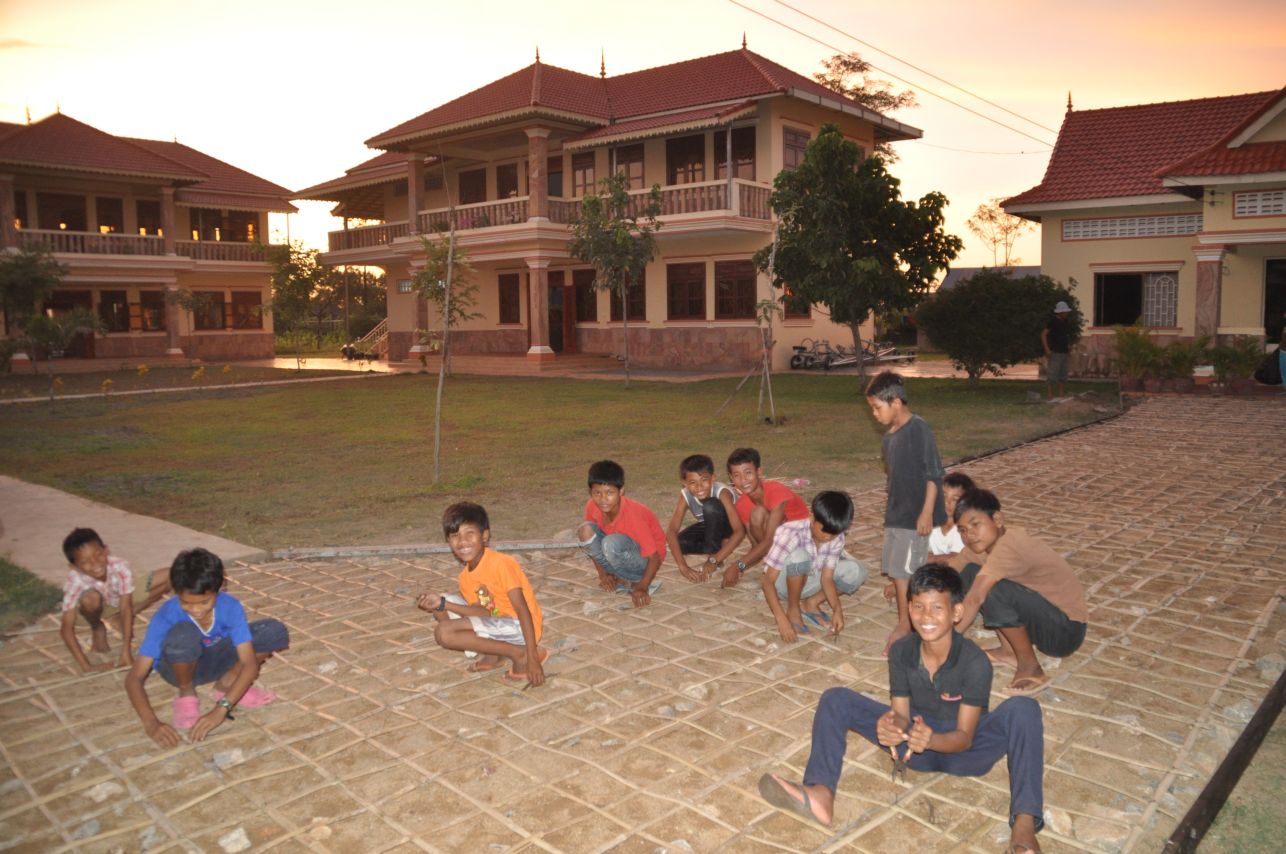
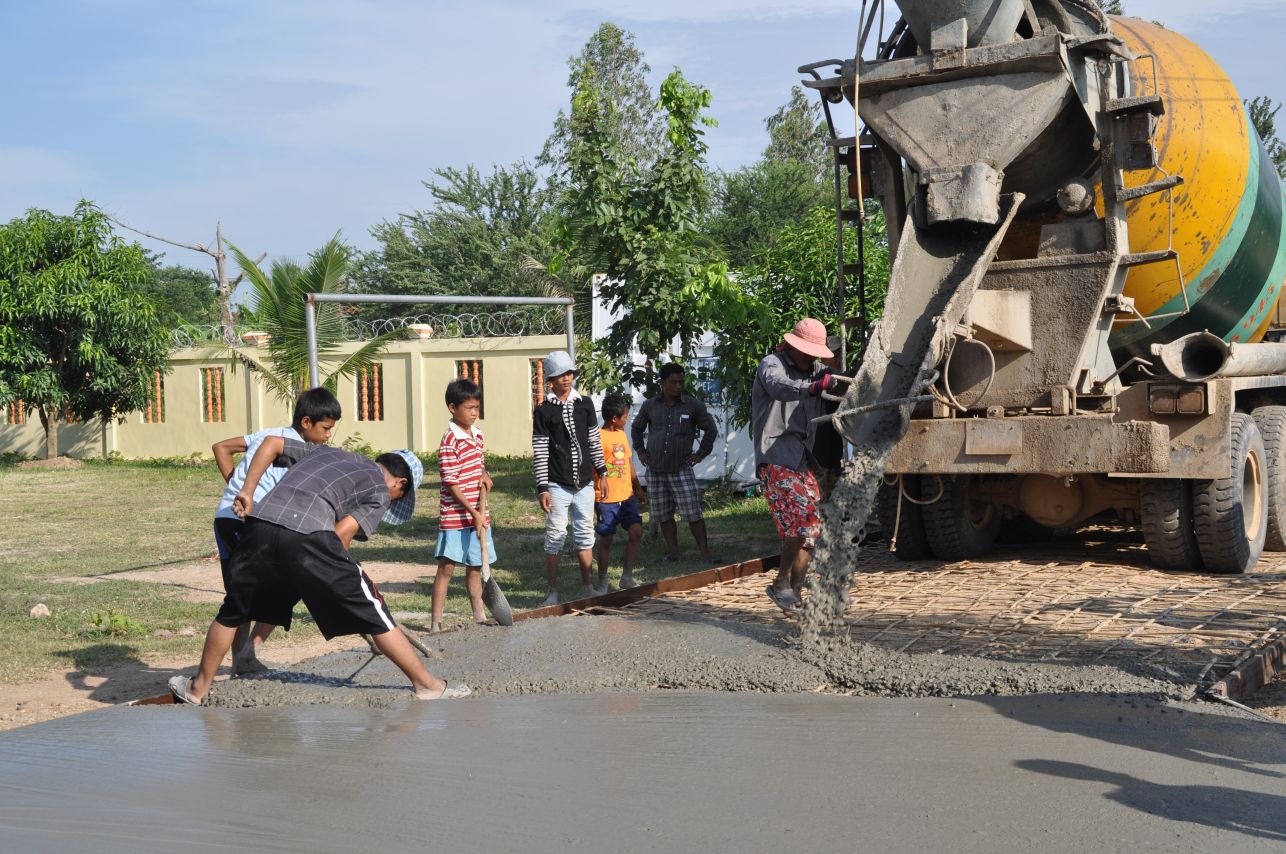
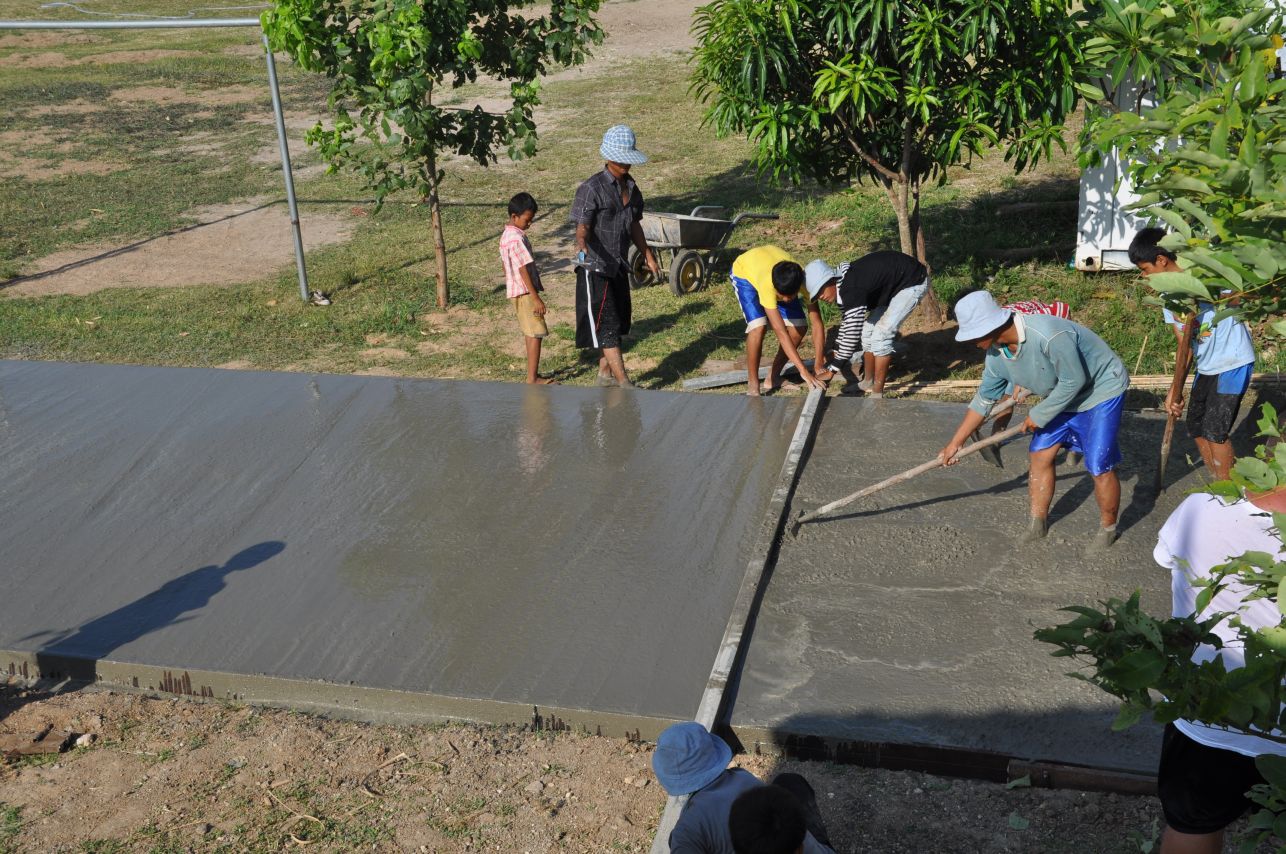
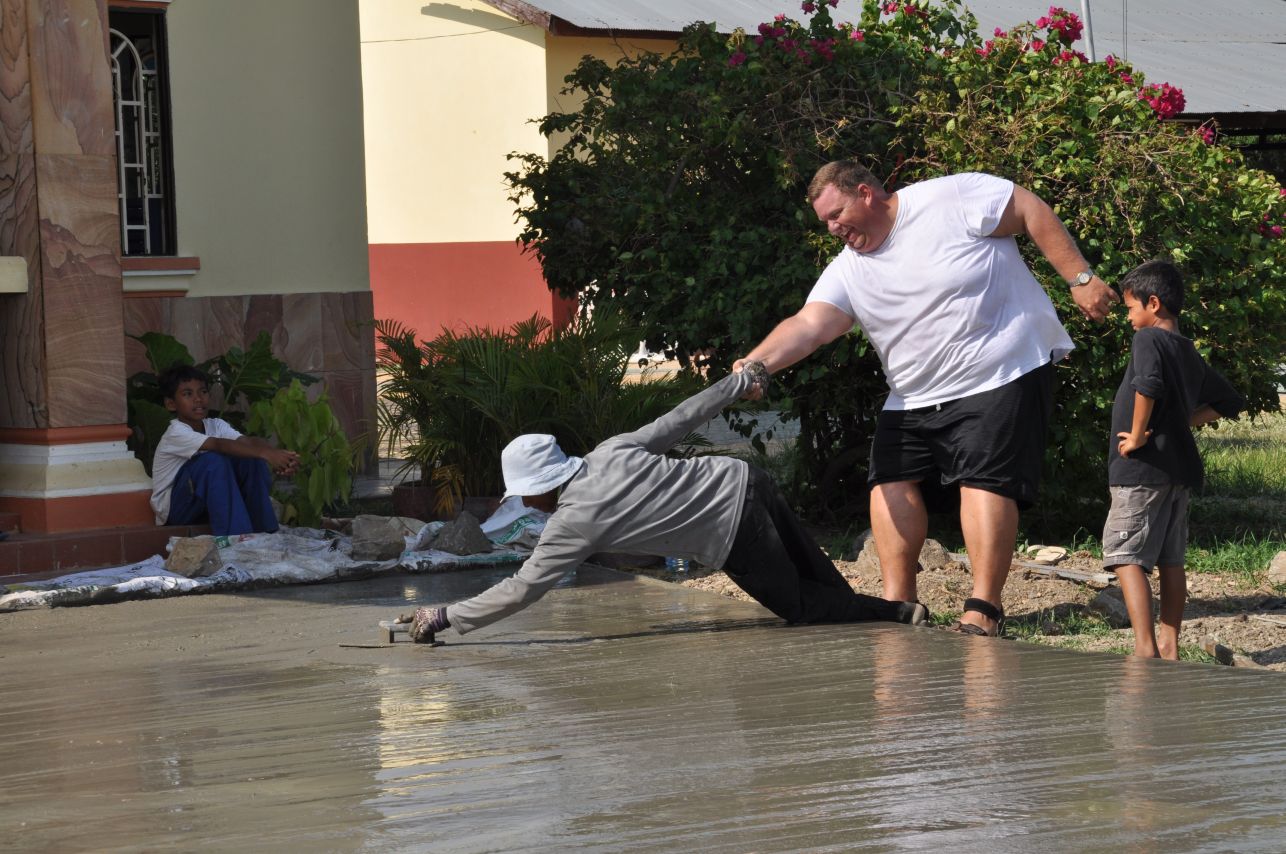
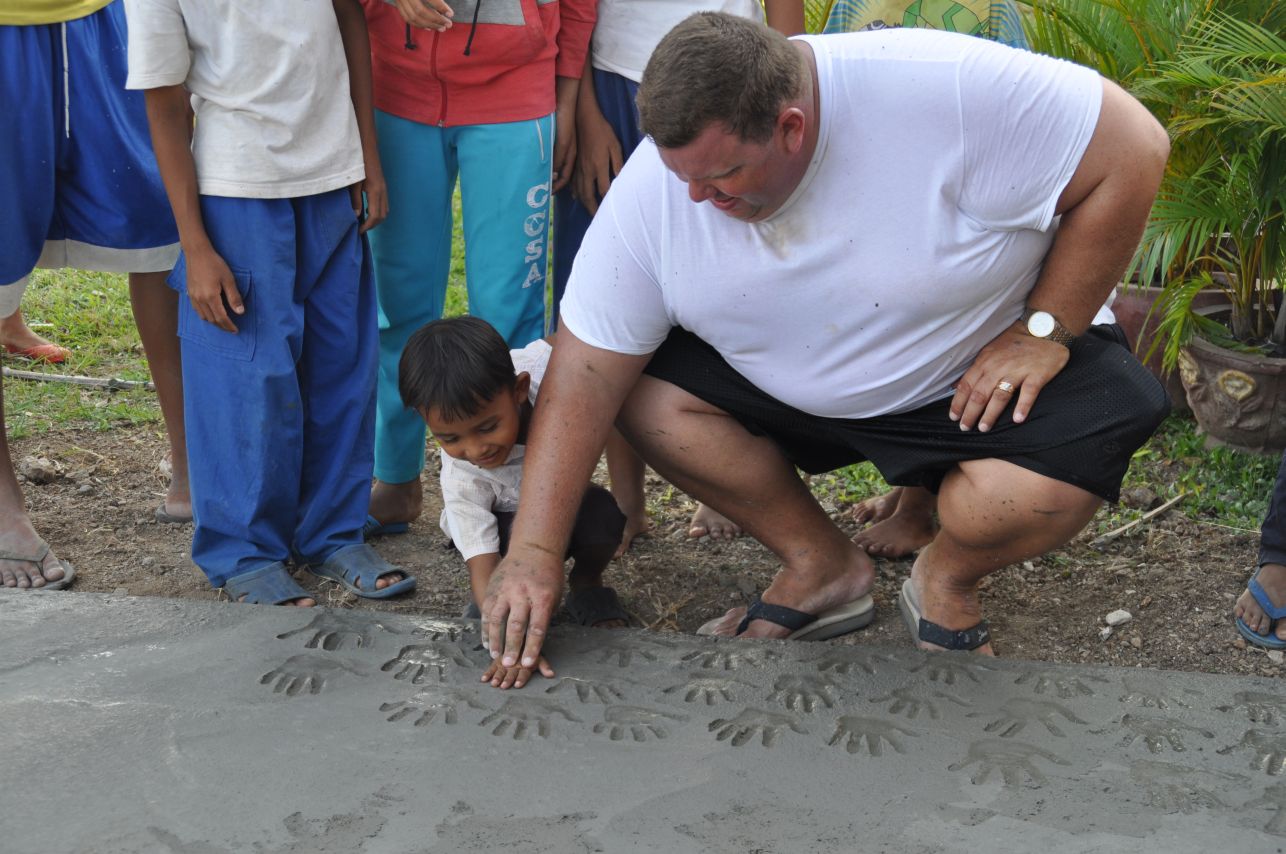
Fantastic! Love it!
Well done Steve. I like that, ‘get the job done’.
From an engineers stance, it’s no worse than a ‘top grade’ official road in Cambodia.
You may be interested in this that may actually work out about the same cost as yours.
Again, well done.
Ian Donaldson.